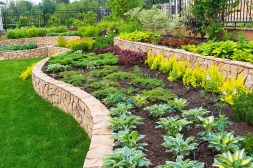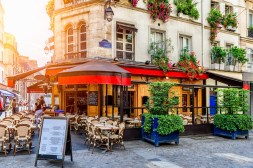The Importance of Native Plants in Creating a Thriving Butterfly Garden
Creating a butterfly garden is not only a beautiful addition to any outdoor space but also an important way to support and protect these delicate creatures. One key aspect of creating a thriving butterfly garden is the use of native plants. Native plants are those that naturally occur in a specific region and have adapted to the local climate, soil conditions, and insect populations. In this article, we will explore the importance of native plants in creating a butterfly garden and how they contribute to the overall health and vitality of these enchanting insects.
Benefits of Native Plants for Butterflies
Native plants play a crucial role in the lifecycle of butterflies. They provide essential food sources for both caterpillars and adult butterflies. Many species of butterflies have specific host plants on which they lay their eggs, and these plants serve as the sole food source for their caterpillars. For example, monarch butterflies rely on milkweed as their host plant, while swallowtail butterflies depend on parsley or dill. By incorporating native host plants into your garden, you are providing the necessary resources for butterflies to complete their life cycle.

In addition to serving as host plants, native plants also offer nectar-rich flowers that provide adult butterflies with sustenance. These flowers have evolved alongside local pollinators, resulting in mutually beneficial relationships where both parties benefit from each other’s presence. By planting native flowers such as coneflowers, bee balm, or black-eyed Susan, you can attract a wide variety of butterfly species to your garden.
Supporting Biodiversity
Using native plants in your butterfly garden not only benefits butterflies but also supports overall biodiversity. Native plant species have co-evolved with local wildlife over time, forming intricate relationships that contribute to healthy ecosystems. By planting native species, you create habitats that are more resilient and sustainable for both wildlife and humans.
Native plants attract not only butterflies but also a range of other pollinators, such as bees and hummingbirds. These pollinators play a critical role in the reproduction of many plants, ensuring the continued existence of various species. By creating a diverse garden with native plants, you are providing a safe haven for these important pollinators and contributing to the overall health of your local ecosystem.
Low Maintenance and Water Conservation
Another advantage of using native plants in your butterfly garden is that they are well adapted to local conditions, making them low maintenance and water-efficient. Native plants have evolved to thrive in specific climates, so they require less watering, fertilizer, and pest control compared to non-native species. This makes them an ideal choice for sustainable gardening practices.
By planting native species that are naturally suited to your region’s climate and soil conditions, you can reduce water usage in your garden. This not only conserves water but also saves you time and effort spent on watering. In addition, native plants are more resistant to pests and diseases, reducing the need for chemical pesticides or herbicides.
Creating a Sense of Place
Lastly, incorporating native plants into your butterfly garden helps create a sense of place by connecting you with the natural beauty of your surroundings. Native plantings reflect the unique character of the region and contribute to its identity. By showcasing these indigenous species in your garden, you celebrate the rich biodiversity and heritage of your area.
Moreover, native plant gardens can inspire others to follow suit and create their own wildlife-friendly spaces. By sharing knowledge about the benefits of native plants for butterflies and other pollinators, you can encourage others to take part in conservation efforts and contribute to preserving our natural world.
In conclusion, using native plants is essential for creating a thriving butterfly garden. They provide vital food sources for caterpillars and nectar-rich flowers for adult butterflies while supporting overall biodiversity. Native plants are low maintenance, water-efficient, and contribute to a sense of place. By incorporating native species into your garden, you can create a haven for butterflies and play an active role in preserving these enchanting creatures for future generations to enjoy.
This text was generated using a large language model, and select text has been reviewed and moderated for purposes such as readability.











